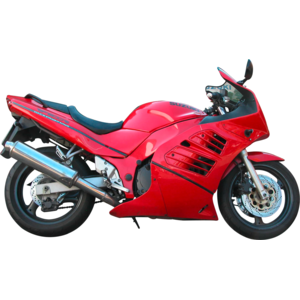Suzuki RF 600 R (1993–1997): The Underrated Middleweight That Bridges Sport and Practicality
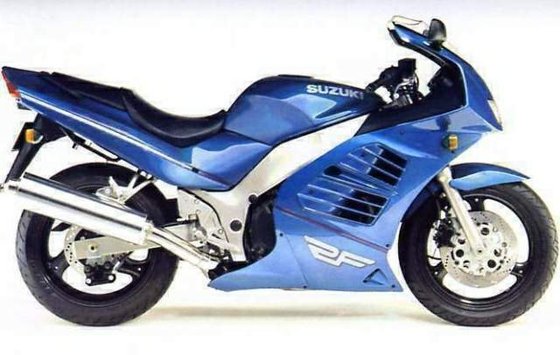
Introduction
The Suzuki RF 600 R, produced between 1993 and 1997, is a motorcycle that defies easy categorization. Positioned as a "new-generation sports bike" by Suzuki, it straddles the line between aggressive sportiness and everyday usability. While overshadowed by its GSX-R siblings, the RF 600 R carved out a niche as a versatile machine for riders who wanted performance without sacrificing comfort. With its striking Ferrari-inspired styling, accessible ergonomics, and a surprisingly flexible engine, this bike remains a hidden gem of the ’90s middleweight class. Let’s dive into what makes the RF 600 R a compelling ride, even by today’s standards.
Design & Aesthetics: A ’90s Time Capsule with Flair
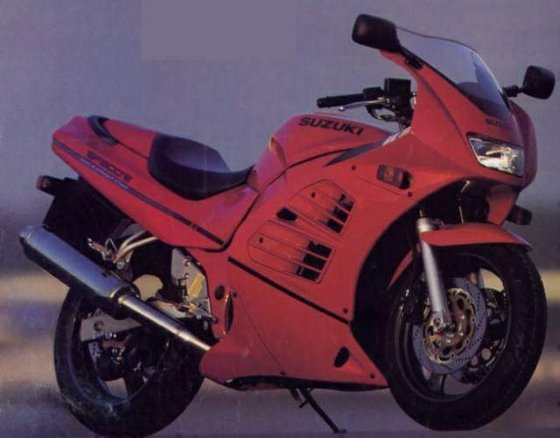
The RF 600 R’s design is its first standout feature. Suzuki’s marketing team likened its aesthetics to "the hide of an animal," but most riders will recognize the Testarossa-esque side vents and futuristic lines that scream ’90s ambition. The full-coverage fairing isn’t just for show—it’s functional, directing windblast away from the rider and housing a surprisingly useful glovebox on the left side. The integrated taillight and underbelly exhaust add a touch of GP racing flair, while the metallic red paint scheme (a signature for the RF) still turns heads decades later.
The riding position is a masterclass in balance. Unlike the wrist-crunching posture of pure sportbikes, the RF’s bars are slightly raised, and the seat is low (775 mm / 30.5 in), making it accessible for shorter riders. The tank narrows at the knees, allowing a natural grip for cornering, while the footpegs sit low enough for comfort but high enough to avoid scraping on spirited rides. It’s a layout that invites all-day rides, though the thinly padded seat and non-adjustable levers hint at cost-cutting measures typical of the era.
Engine Performance: Smooth Operator with a Split Personality
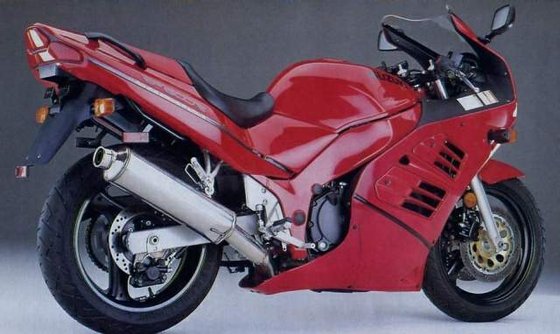
At the heart of the RF 600 R lies a 599cc liquid-cooled inline-four engine, derived from Suzuki’s GSX-R lineage but retuned for broader usability. With 98–100 HP (72.9–73 kW) at 11,500 RPM and 47.4 lb-ft (64.2 Nm) of torque at 9,500 RPM, it’s no slouch, but its character is more "refined streetfighter" than "track-day terror."
Low-to-Mid Range: Below 7,500 RPM, the RF feels docile, even hesitant. The 36mm Mikuni carburetors—a carryover from the GSX-R600—suffer from a notorious flat spot just off idle, requiring careful throttle modulation when launching. This isn’t a bike you’ll drag-race confidently without practice.
High RPM Heroics: Cross 7,500 RPM, though, and the RF transforms. The engine spins freely, delivering linear power all the way to its 13,500 RPM redline. The exhaust note sharpens into a metallic snarl, and acceleration becomes urgent, propelling the bike to a top speed of 235 km/h (146 mph). Sixth gear acts as an overdrive, making highway cruising relaxed at 5,000 RPM for 120 km/h (75 mph).
Fuel Efficiency: Expect 6.8 L/100 km (34.8 US mpg) during aggressive riding, improving to 5.9 L/100 km (40 US mpg) at steady speeds. The 17L (4.5-gallon) tank offers a 250–300 km (155–186 mi) range, with a handy low-fuel light activating at ~80 km (50 mi) remaining.
Chassis & Handling: Stable, Forgiving, but Not a Corner Carver
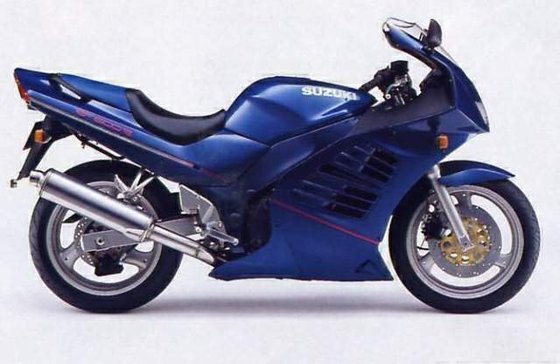
Suzuki’s first foray into a twin-spar steel frame pays dividends here. The RF 600 R’s chassis prioritizes stability over razor-sharp agility, with a long 1,430 mm (56.3 in) wheelbase and conservative steering geometry (25° rake, 103 mm trail). This makes it a confidence-inspiring companion on highways and sweeping bends, though tighter corners require deliberate effort to flick the 195 kg (430 lb) machine.
Suspension: The 41mm telescopic forks (preload-adjustable) and rear monoshock (rebound and preload adjustments) are softly sprung for road comfort. While they soak up bumps admirably, aggressive riders will notice squat under hard acceleration and dive during braking. Ground clearance is limited—the hero blobs scrape early, a reminder that this isn’t a dedicated sportbike.
Brakes: Dual 290mm front discs with 4-piston calipers offer progressive feel but lack the bite of modern radial setups. Stopping from 100 km/h (62 mph) takes 37.2 meters (122 ft), adequate but not class-leading. The rear 240mm disc is predictable, if unremarkable.
Tires: The OEM Dunlop D202 radials strike a balance between grip and longevity. Modern rubber like Michelin Road 6s would transform the RF’s cornering manners.
Riding Experience: Jack of All Trades, Master of Fun
Swing a leg over the RF 600 R, and its dual nature becomes apparent. Around town, the soft suspension and manageable seat height make it a commuter-friendly option, though the carburetion hiccups demand patience in stop-and-go traffic. The mirrors are wide and vibration-free—a rarity in this class—and the fairing pocket fits a phone or wallet securely.
On twisty backroads, the RF rewards smooth inputs. Aggressive throttle chops mid-corner unsettle the chassis, but maintain a steady line, and the bike flows with grace. The engine’s top-end rush is intoxicating, and the 6-speed gearbox (with a notably light clutch) slots cleanly between ratios.
Long-distance touring is possible but requires compromises. The low bars induce wrist fatigue after an hour, and the seat’s foam compresses quickly. A set of aftermarket risers and a Sargent seat (available at MOTOPARTS.store) would address these quibbles.
Competition: How the RF 600 R Stacks Up
The mid-’90s 600cc class was fiercely competitive. Here’s how the Suzuki held its ground:
-
Honda CBR600F (1991–1999): The CBR edges out the RF in peak power (110 HP) and has sharper handling. However, its riding position is more aggressive, and the engine lacks the Suzuki’s creamy top-end delivery.
-
Yamaha FZR600 (1989–1999): Lighter and more nimble, the FZR thrives in tight corners. Yet its 5-speed gearbox and dated chassis feel archaic compared to the RF’s 6-speed flexibility.
-
Kawasaki ZZR600 (1990–2002): The ZZR’s fairing offers superior wind protection, and its 599cc engine is torquier at low RPMs. But it’s heavier (210 kg / 463 lbs) and lacks the RF’s visual drama.
Verdict: The RF 600 R isn’t the fastest or lightest, but its blend of comfort, stability, and accessible performance makes it a standout for real-world riding.
Maintenance: Keeping the ’90s Legend Alive
The RF 600 R is mechanically robust but demands attention to a few key areas:
-
Valve Adjustments: Every 24,000 km (15,000 mi), check valve clearances (intake: 0.10–0.20 mm / 0.004–0.008 in; exhaust: 0.20–0.30 mm / 0.008–0.012 in). Shim-under-bucket design requires patience but ensures longevity.
-
Carburetor Tuning: The stock jetting leans out at low RPMs. A Dynojet Stage 1 kit (available at MOTOPARTS.store) eliminates flat spots and improves throttle response.
-
Cooling System: Flush coolant every 2 years using ethylene glycol. The 2.45L system is prone to airlocks—bleed thoroughly after refills.
-
Chain & Sprockets: The 14/43T sprocket combo wears quickly. Upgrade to a DID 520VX3 chain and steel sprockets for extended life.
-
Brakes: Swap to sintered pads (EBC HH) and DOT 5.1 fluid for improved feel.
Pro Tip: The RF’s oil capacity is 3.3L (with filter). Use 10W-40 semi-synthetic to protect the high-revving valvetrain.
Final Thoughts: A Cult Classic Worth Rediscovering
The Suzuki RF 600 R is a motorcycle that grows on you. It doesn’t dominate spec sheets or collector forums, but its unique blend of style, comfort, and accessible performance makes it a joy to own. For riders seeking a ’90s icon that won’t punish them on long rides—or for those looking to build a budget-friendly sport-tourer—the RF 600 R remains a compelling choice.
At MOTOPARTS.store, we’re passionate about keeping these machines on the road. From carburetor kits to upgraded suspension components, explore our catalog to unlock the RF’s full potential.
Ride smooth, ride safe, and keep the spirit of the ’90s alive.



